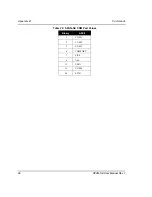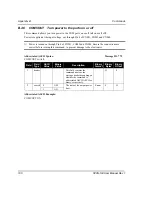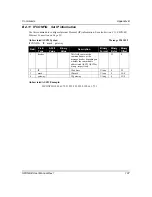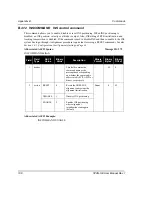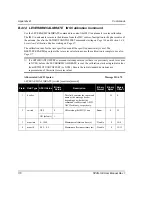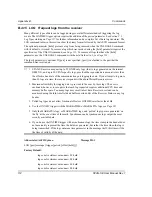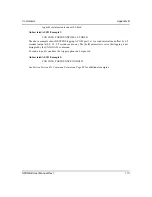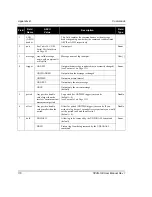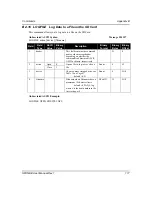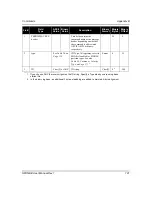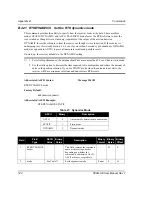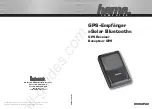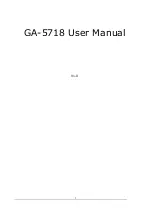
112
SPAN-SE User Manual Rev 1
Appendix B
Commands
B.4.15 LOG
Request logs from the receiver
Many different types of data can be logged using several different methods of triggering the log
events. The ONTIME trigger option requires the addition of the
period
parameter. See
for further information and a complete list of data log structures. The
LOG
command
tables
in this section
show the binary format followed by the ASCII command format.
The optional parameter [hold] prevents a log from being removed when the UNLOGALL command,
with its defaults, is issued. To remove a log which was invoked using the [hold] parameter requires the
specific use of the UNLOG command, see
. To remove all logs that have the [hold]
parameter, use the UNLOGALL command with the
held
field set to 1, see
The [port] parameter is optional. If [port] is not specified, [port] is defaulted to the port that the
command was received on.
1. SPAN-SE users can request up to 25 GNSS only logs (that is, logs generated on the internal
OEMV-3), and up to 30 SPAN-specific logs, provided the requested data amount is less than
the effective baud rate of the communication port logging the data. If you attempt to log more
than 30 logs at a time, the receiver responds with an Insufficient Resources error.
2. Maximum flexibility for logging data is provided to the user by these logs. The user is
cautioned, however, to recognize that each log requested requires additional CPU time and
memory buffer space. Too many logs may result in lost data. Receiver overload can be
monitored using the idle-time field and buffer overload bits of the Receiver Status in any log
header.
3. Polled log types do not allow fractional offsets or ONTIME rates faster than 1Hz.
4. Use the ONNEW trigger with the MARK
x
TIME or MARK
x
5. Only the MARK
x
PVA logs, or MARK
x
TIME logs, and ‘polled’ log types are generated ‘on
the fly’ at the exact time of the mark. Synchronous and asynchronous logs output the most
recently available data.
6. If you do use the ONTIME trigger with asynchronous logs, the time stamp in the header does
not necessarily represent the time the data was generated, but rather the time when the log is
being transmitted. If the log contains a time parameter in the message itself, this time will be
the time of validity of the data.
Abbreviated ASCII Syntax:
Message ID: 1
LOG [port] message [trigger [period [offset [hold]]]]
Factory Default:
log com1 rxstatuseventa onnew 0 0 hold
log com2 rxstatuseventa onnew 0 0 hold
log com3 rxstatuseventa onnew 0 0 hold
log com4 rxstatuseventa onnew 0 0 hold

